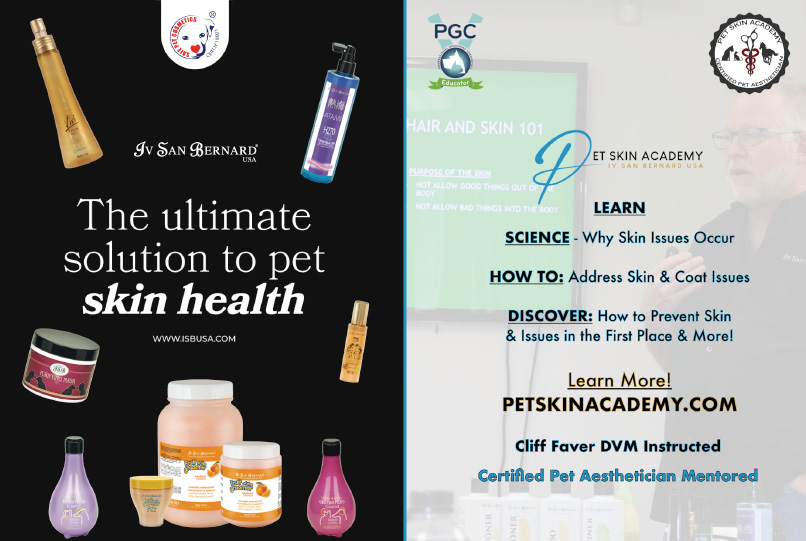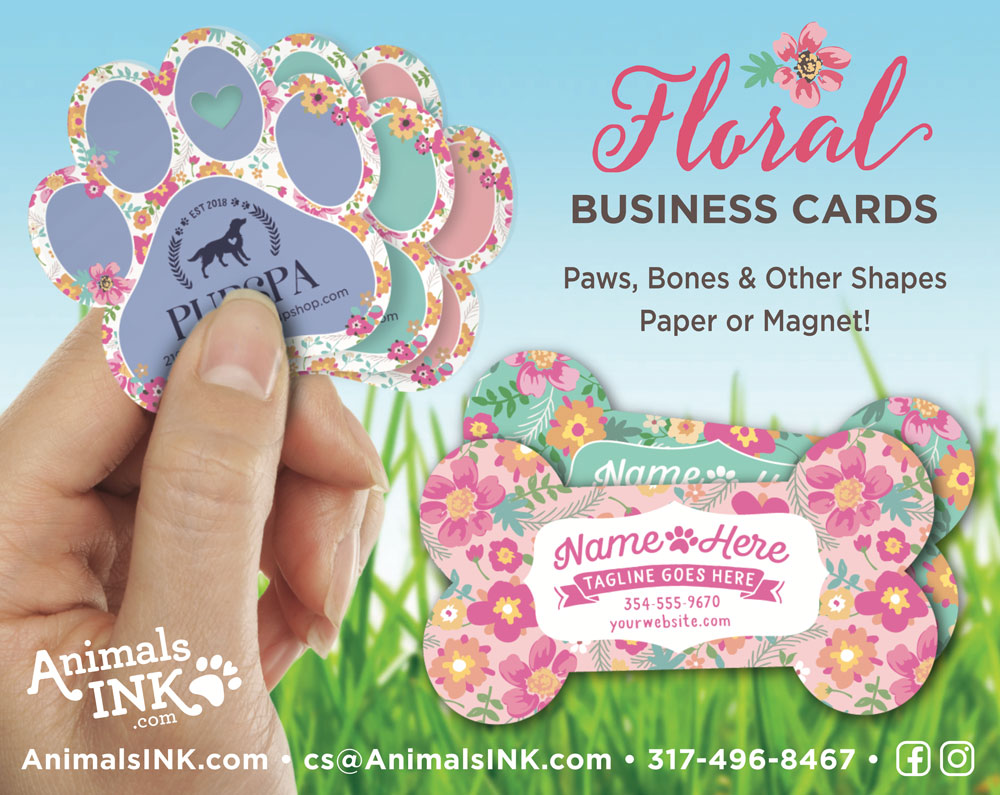
 roomers today have an almost limitless amount of tools, equipment and resources at their fingertips to make every facet of their job faster, easier and more fulfilling. Can you imagine what it was like to groom before cell phones, the internet and grooming shows?
roomers today have an almost limitless amount of tools, equipment and resources at their fingertips to make every facet of their job faster, easier and more fulfilling. Can you imagine what it was like to groom before cell phones, the internet and grooming shows?
I contacted some groomers that started their careers years ago before all the modern conveniences were available. Here are some of their stories of what it was like to groom “back in the olden days…”
When self-taught groomer Betsy Schley began grooming, her first pair of clippers were the Oster Manual Hand Held Hair Clippers. They were not electric—they operated by human power; every squeeze of the hand moved the cutting blade back and forth.
“I used to groom Standard Poodles in a Dutch Clip for five dollars on an old Formica kitchen table in my basement,” Betsy recalls. “About 1967, I got an A2 clipper. I still have it and it still works. They would get so hot they would burn my hand as I working.
“Back then there were very few shampoos and products to choose from,” she continues. “Between those and the harsh dips we had to use, my hands would often be bleeding. Thankfully, better products came along.
“I had one of the very first Kool Dry dryers that Ron Goldman made—what a lifesaver,” Betsy adds “Before that I would have to lug my big stand dryer to shows, and would often blow circuits when using them in hotel rooms while preparing my dogs for a competition.”
Groomer Michelle Temples has also seen and embraced many changes to the industry in the over half-century she has been in it.
“When I started grooming, there were only skip-tooth blades,” Michelle shares. “They were so dangerous…especially the skip-tooth #7. The tables we had were back-breakers. They had little fold-up legs, and if you needed them higher, you put blocks under the feet.
“Now, I am semi-retired but still grooming 5-6 dogs a day. Instead of working seven days a week, I work four. Life in the grooming industry has been a wild ride, but I wouldn’t change a thing,” concludes Michelle.
Another veteran groomer, Vickie Haywood, spent 55 years grooming, breeding, and showing poodles and other breeds. She has finished many champions and also taught obedience training for 35 years.
“My sister, Bobbie Cheely, gave me my first poodle from one of her litters,” Vickie recounts. “She taught me the basics of poodle grooming, using seven-inch barber scissors and a Sears animal clipper. We dried them with the hose from a bonnet human hair dryer, brushing them as we held them on our laps. In 1984, I bought my first HV-style dryer, an Orange Commander, and never looked back.”
Many early groomers were self-taught, including Karen Kinleyside, who started small, but quickly found that the world of grooming held endless possibilities for her.
“I started my grooming career in 1978,” begins Karen. “I was married and had a two-year-old child, so I was pretty much stuck at home. I wanted to be a contributing partner in our marriage and I loved the idea of grooming, but had no idea how to break into it except for picking up clippers and scissors and start cutting hair.
“My mom sent me a grooming book with pattern cuts,” she continues. “I had a universal curved slicker brush, cheap scissors, and no real idea of what I was doing. I practiced on my own Toy Poodle to learn. Trial and error was a big part of how I started out.
“Shortly after I started working [at a boarding/grooming facility], we entered the world of computers,” Karen adds. “Imagine my amazement when I was able to Google grooming—and the world of everything grooming was at my fingertips!”
Groomer Barbara Efremenko is a testament to the longevity of groomers and of some of their equipment.
“I have an old pair of Dubl Ducks that I still use and cherish today,” Barbara adds. “They’ve been sharpened so many times that only the bottom portions of the lettering are left. And I am still using a Romani Clipper Vac that was manufactured in ‘86. Some things have not changed!”
We’ve all heard the phrase, “Necessity is the mother of invention.” Well, Lori Cook Briggs, who has been grooming since the 70s, found a way to solve a problem many groomers have experienced…
“I started grooming SPCA dogs to help them get adopted,” says Lori. “Back then, the best clippers were the Oster A5. But, they would get extremely hot in your hands while grooming and they had vents that blew out hot air and fine hair splinters. When the brushes in the clipper would wear out, the blades would start to drag in the coat. I would try to scissor out the unevenness to get a smoother finish.
“I remember the day I discovered reverse clipping,” continues Lori. “I was grooming a Cocker Spaniel named Ruffles. My clippers were acting up and leaving bad lines. I kind of laughed and said, ‘Ruffles has ridges!’ It was then that the idea came to me to try to use a longer blade in reverse to smooth it out. I was amazed!”
Maria Hetem began her career in 1980 and became one of the first mobile groomers. She has faced many challenges—good and bad—during her career, but she is still going strong.
“There were no mobile van manufacturers then,” explains Maria. “I had to buy a van and have a body shop chop off the top and put on the extension. Then, I had a motor home company do the build-out inside. There were no cell phones, but I managed to be a mobile groomer.

“Boy, did we do things different in the olden days! Then we didn’t have cell phones or digital photography. Now, we are able to document everything with our phone.”
-Dawn Omboy

“I attended the first Groom Expo, and I remember when Groomer To Groomer magazine was nothing more than a flyer folded in fours,” Maria adds. “I wouldn’t exchange my experiences for the world and I still love my chosen career, I’m just a little slower at it these days.”
Mitra Klamanesh began her career grooming in the back of a feed store. While some of the dogs would come in to be groomed four times a year, the majority of dogs she did were only groomed once every one or two years.
“In my desire to learn and do better, I would go to dog shows and follow the handlers around learning how to properly do a profile trim,” continues Mitra. “I took actual 35mm pictures of the show dogs and printed them out and laid them on my counter. Then looking at the dog on my table, I tried to transform that dog into as close to a show dog as I possibly could. Now, you can pull everything up on the internet!”
Dawn Omboy, who became known as “The Queen of Color” through her fabulous creative grooming and coloring skills, remembers the struggles early groomers faced and explains how she helped bring about positive changes in the industry.
“Boy, did we do things different in the olden days!” exclaims Dawn. “Then we didn’t have cell phones or digital photography. I remember telling someone on the phone, ‘Well, if I could see your dog on the phone, I could give you a more accurate price.’ Now, we are able to document everything with our phone.
“The struggle of competitiveness and jealousy between shops was horrible,” Dawn adds. “People talked bad from one shop to the next instead of being helpful. It was for that reason I started the Internet Mingle at Hershey’s Groom Expo, to bring groomers together and have an even better time at the shows getting to know the friends we met on the message boards.”
The grooming industry has come a long way from flea dips, five-dollar grooms and archaic equipment. We can be grateful for all the modern advancements that make our jobs easier and our role in pet care more respected. Good riddance to the olden days!


